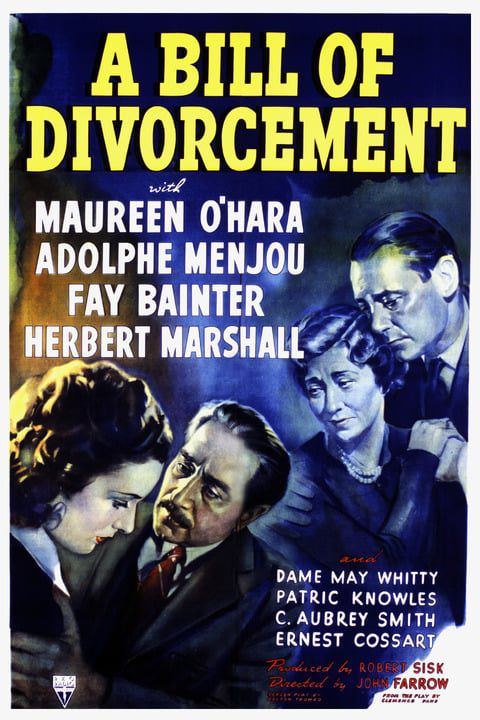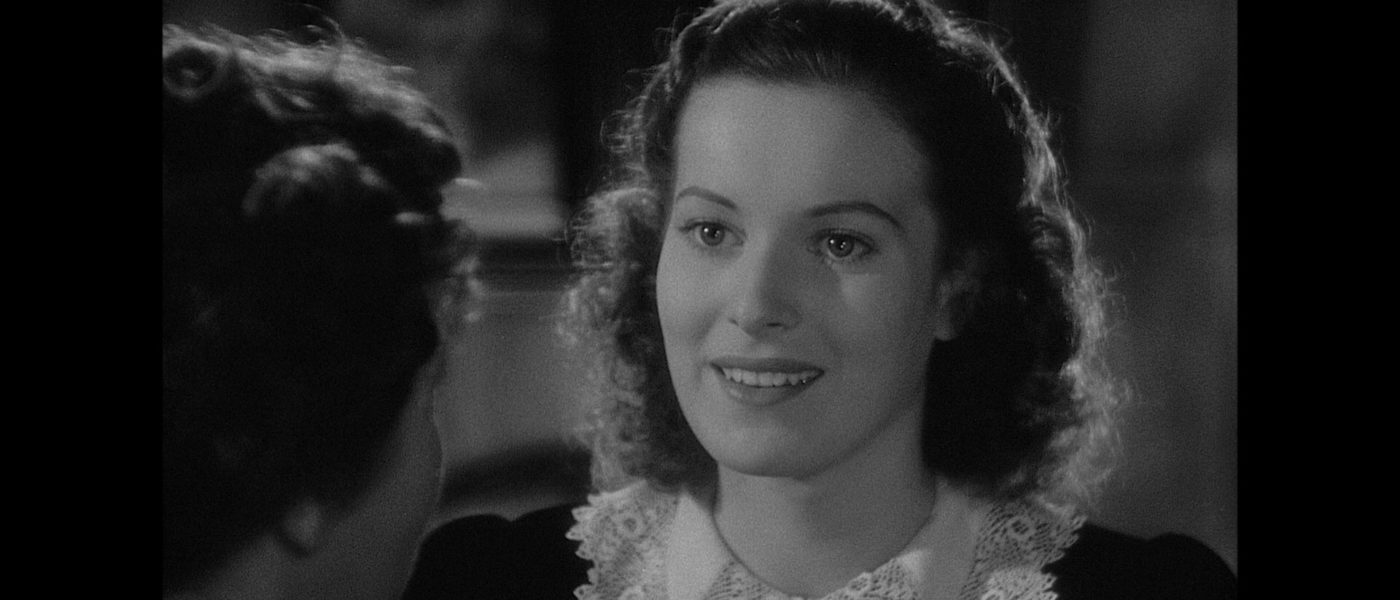DIRECTED BY: JOHN FARROW/1940
Kino Lorber Street Date: February 26, 2019
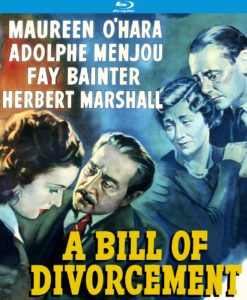
A Bill of Divorcement (1940) is an odd film, before even one frame of it is even viewed, just for the sheer fact that it was already a hit film just eight years prior in 1932 when it starred Katherine Hepburn and John Barrymore in Hepburn’s star-turning film debut. Both versions of this film were based on a 1921 Clemence Dane play. This 1940 version of the film features a script by the infamous Oscar-winning, and black-listed writer, Dalton Trumbo (Roman Holiday, Spartacus). The only real reason for remaking this film just 8 years later, at least in terms of a credible reason, is the studio’s attempt to try and do for Maureen O’Hara what the previous film had done for Hepburn….and that is make her a star.
This release on Blu-Ray boasts a brand new 2K Master restoration. The picture, though in Black & White, is a very clean and nice looking transfer and the sound is also clear without the hiss and pops that typically accompany a film that is nearly 80 years old. It is presented in 1.37:1 and 1920x1080p aspect ratios. The only real extras of this release are trailers for other Kino Lorber releases.
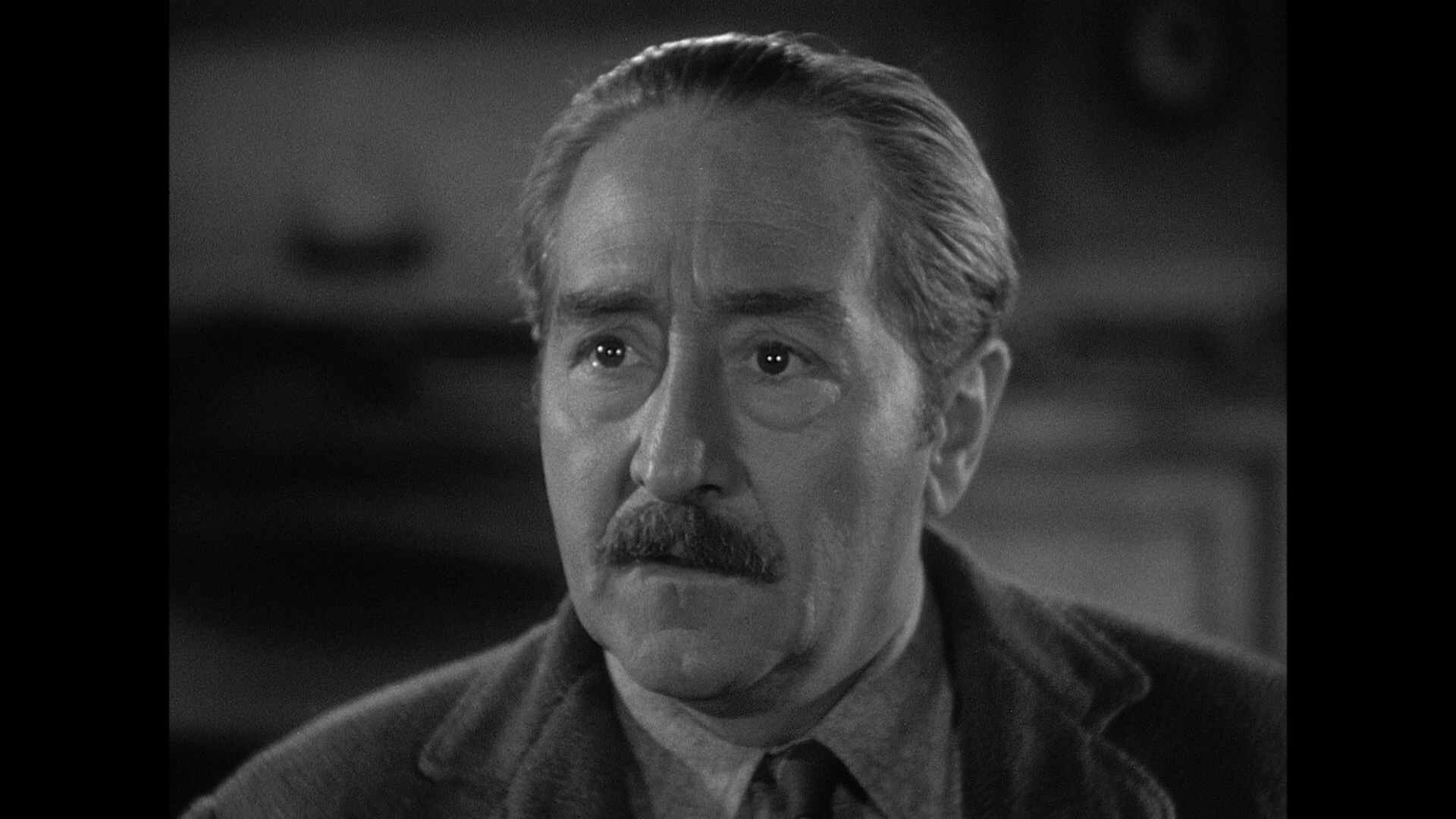
Like its 1932 counterpart, A Bill of Divorcement tackles the controversial depiction of mental illness and war. A British court ruling paved the way for the situation that sets up this plot whereby a woman could file for a bill of divorcement if they could show that their husband was “legally insane”. After 15 years in an mental hospital, Hilary Fairfield (Adolphe Menjou) is coming home. What he finds when he arrives home might just put him back in the institution, however.
In his absence, his then four-year-old daughter Sydney (O’Hara) has grown to be a 19-year old woman who is engaged to be married, and whose independence and knack for telling her mother Meg (Fay Bainter) and Aunt Hester (Dame May Whitty) exactly what she thinks, no matter who it offends in their polite society. The wrench in Hilary’s dream of a happy family reunion when he arrives is that Meg is planning to re-marry herself, just as soon as the bill of divorcement is signed.
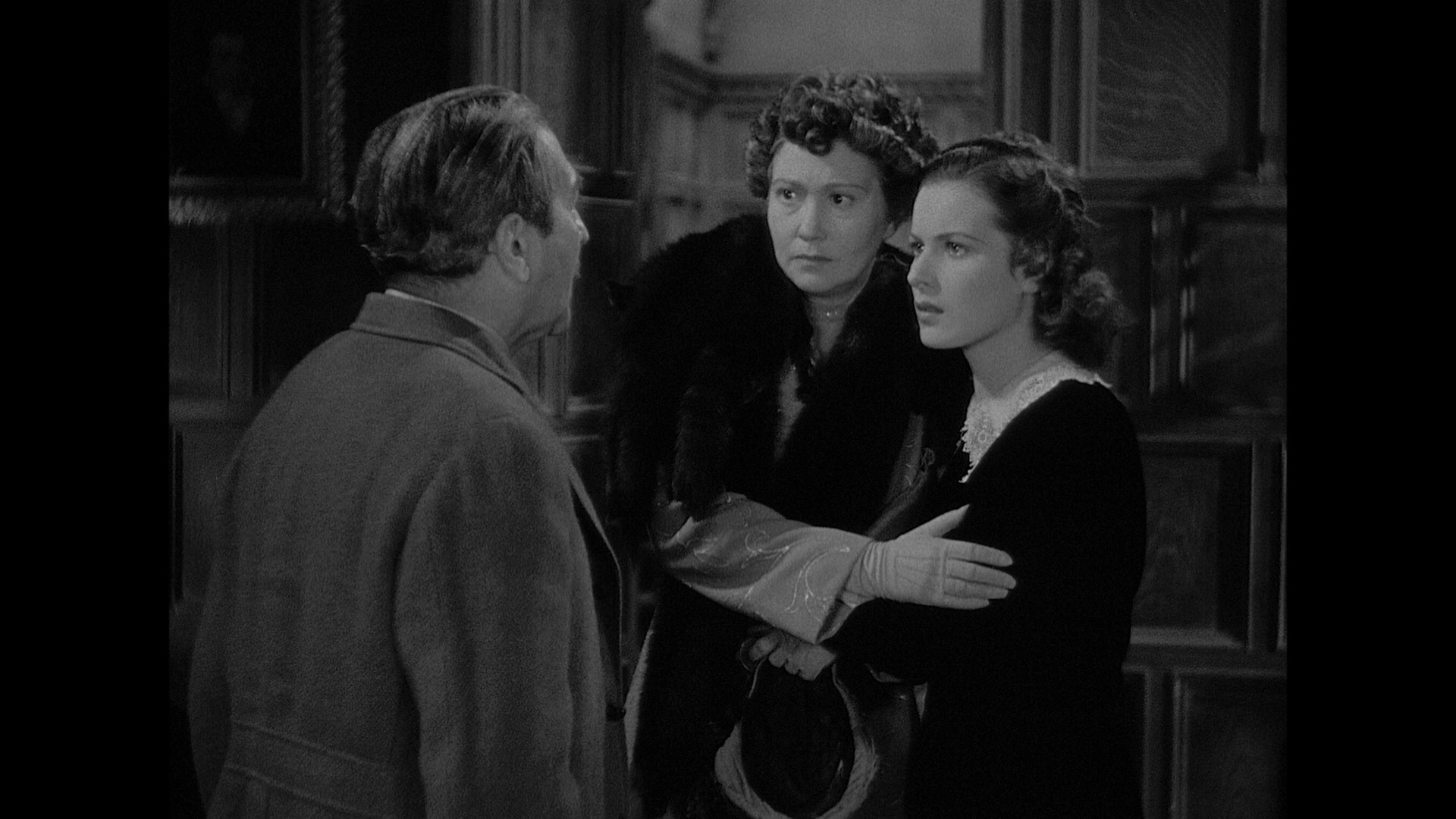
Hilary has been in the mental hospital as a result of “shell-shock” from the Great War. Today, this would be seen as Post-Traumatic Stress Disorder (PTSD), but in 1921, when the play was written, and even in 1932 and 1940 for the film versions, PTSD was enough to diagnose “insanity”. This “insanity” diagnosis was thought to have been genetically passed on, much like the genetic component to the diagnosis of Bi-Polar Disorder today. While genetic factors can play a role, a traumatic event like war would not typically create a situation like it exists in this script. At the time, however, such a diagnosis could easily be a life-sentence in an asylum.
Would the spouse who is left alone for so many years be expected to simply remain alone based on the vows they took at their wedding? Of course the vows say “in sickness and in health” and “for better or worse”, but would nearly 2 decades of separation constitute a marriage? Is this fair to the remaining spouse in terms of their sexual needs and desire for companionship, which again was expected to only be fulfilled through the marriage relationship? These are the primary questions being asked and wrestled with given the cultural context in which these films were made.
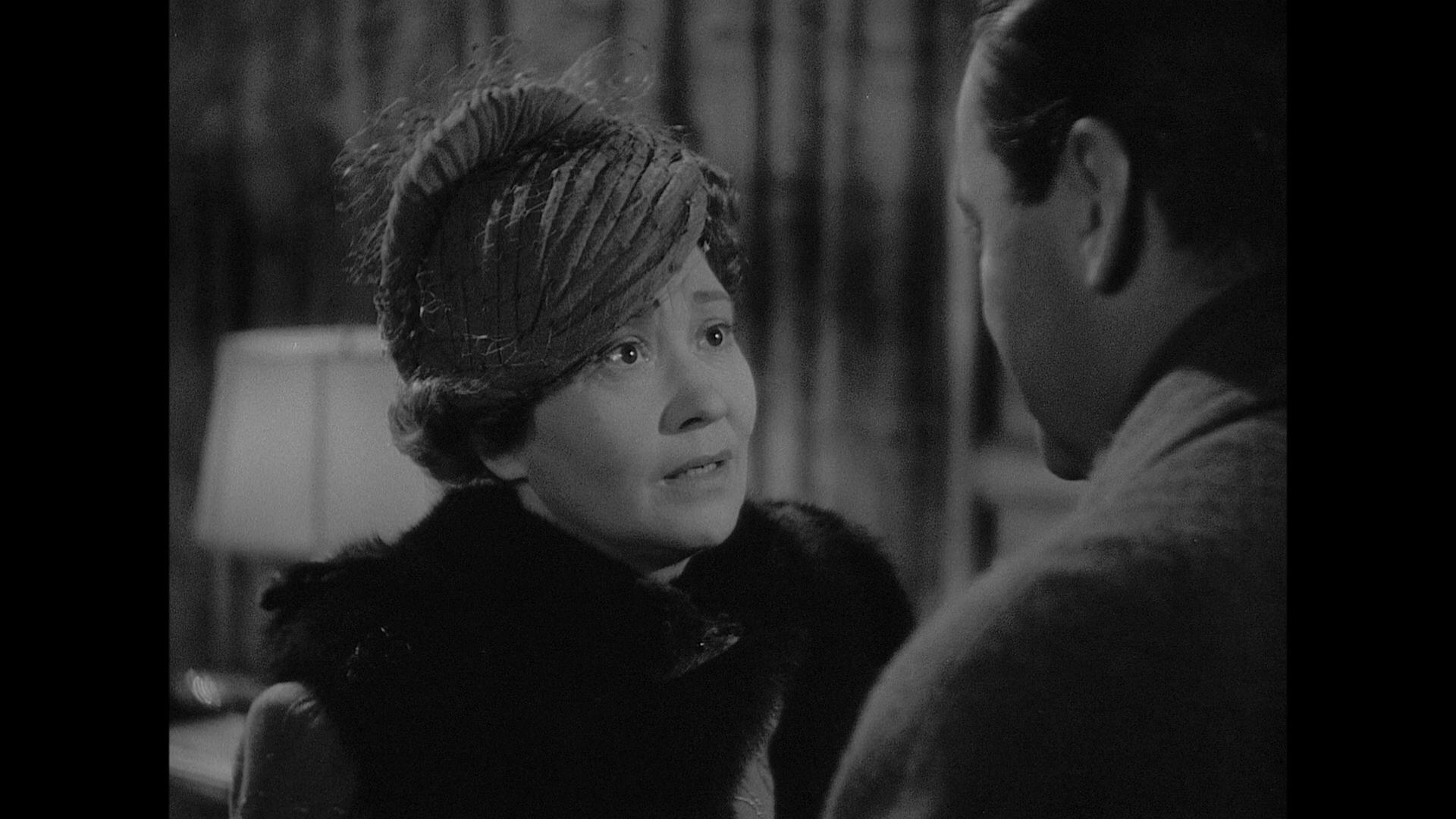
The other issue being addressed in this film is the notion of what such a diagnosis meant for children of those being labeled as “insane”. As Sydney learns why her father has truly been absent from her for most of her life, she slowly is overcome by the idea that such “insanity” would also be a part of her since it was thought to always be passed down genetically. Facing a life where she might go insane and be put in an institution, she realizes that her hopes for marriage and a family are now just a pipe dream. As she comes to face this reality, it forces her to confront the decision about whether she should even continue in her relationship, or break it off and resign herself to a life of isolation so as to stop the “insanity” from afflicting future generations.
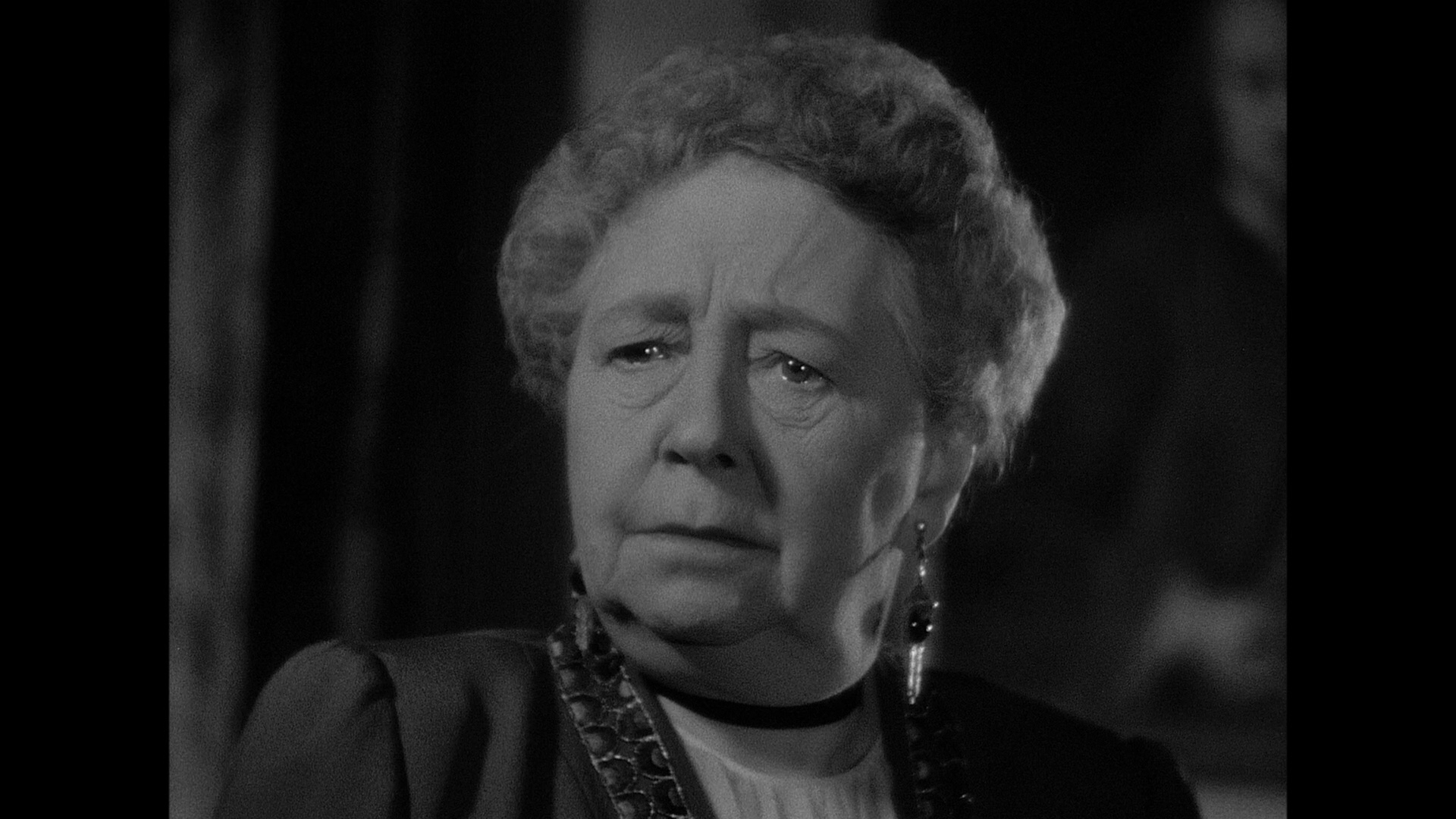
While the film is a competent one with Maureen O’Hara displaying the strong, independent woman that she would embody throughout her career, and in classics like Miracle on 34th Street, The Quiet Man, The Parent Trap, and even Only the Lonely, it unfortunately seems very dated by its subject matter alone. So much as changed that it no longer is the cultural bomb that such a script would have been in the 1920’s to 1940’s. That said, it is a clear example of the brilliance of Dalton Trumbo’s writing, and the performances by the entire cast are very good, including the support work of Herbert Marshall, Patric Knowles, Ernest Cossart, and C. Aubrey Smith.
Kino Lorber has also released the 1932 version of this film, featuring Katherine Hepburn, which means that you could own both versions of A Bill of Divorcement. While the story is not as compelling as it once was, both versions of these films feature the beginnings of two of Hollywood’s greatest leading ladies, first Katherine Hepburn, and in this 1940 version, Maureen O’Hara.
